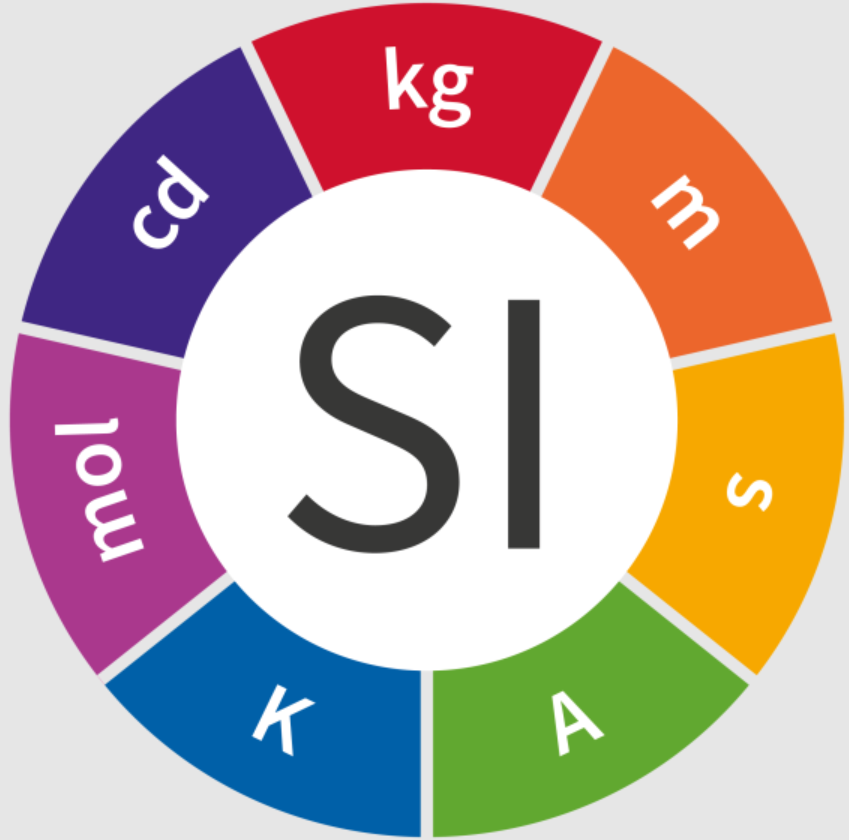
metre
The meter (m) is the SI unit of length, defined as the distance light travels in a vacuum in 1/299,792,458 of a second. This definition ties the meter to the speed of light and the caesium frequency used to define the second.
kilogram
The kilogram, symbol kg, is the SI unit of mass,defined by the fixed value of the Planck constant (h), 6.62607015×10–34 J s, equivalent to kg m² s–1, with the meter and second defined based on the speed of light (c) and the caesium frequency (Δncs).
second
The second (s), the SI unit of time, is defined by the fixed numerical value of the caesium frequency (Δncs), the unperturbed ground-state hyperfine transition frequency of the caesium-133 atom, which is 9192631770 Hz, equivalent to s–1.
ampere
The ampere (A), the SI unit of electric current, is defined by the fixed value of the elementary charge (e), 1.602176634×10–19 C, equivalent to A s, with the second defined based on the caesium frequency (Δncs).
kelvin
The kelvin (K), SI unit of temperature, is defined by the Boltzmann constant (k), 1.380649×10–23 J K–1, with the kilogram, meter, and second defined in terms of Planck's constant (h), speed of light (c), and caesium frequency (Δncs).
mole
The mole (mol), SI unit of substance amount, equals 6.02214076×10²³ entities (Avogadro's constant, NA) in mol⁻¹. It measures specified entities like atoms, molecules, ions, or electrons.
cd
The candela (cd), SI unit of luminous intensity, is defined by the luminous efficacy of 540×10¹² Hz radiation as 683 lm W⁻¹, or cd sr W⁻¹, with kg, m, and s defined in terms of h, c, and Δncs.